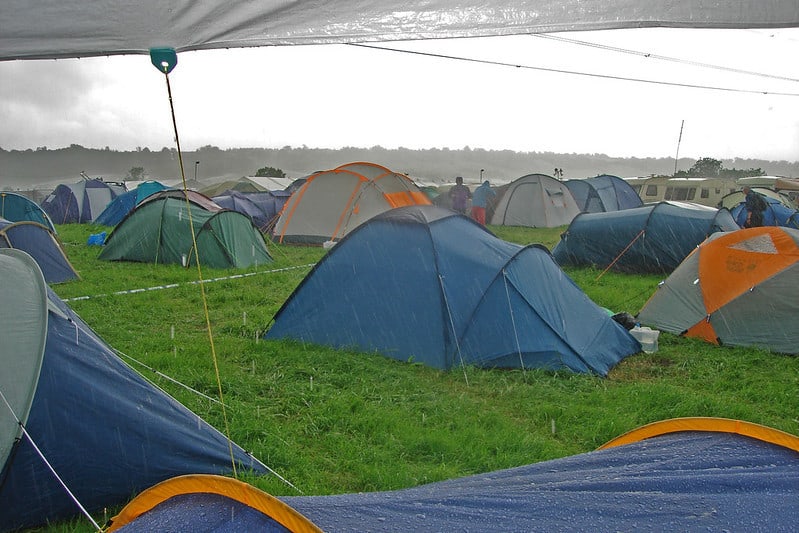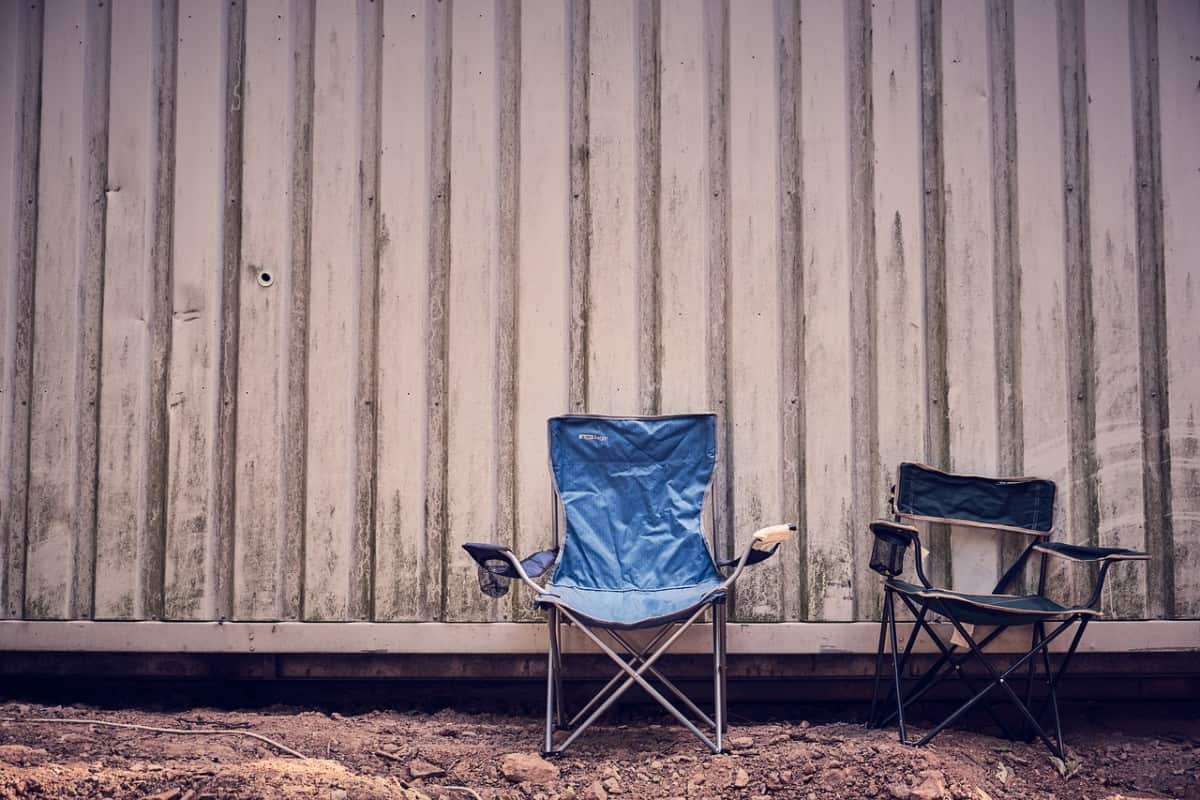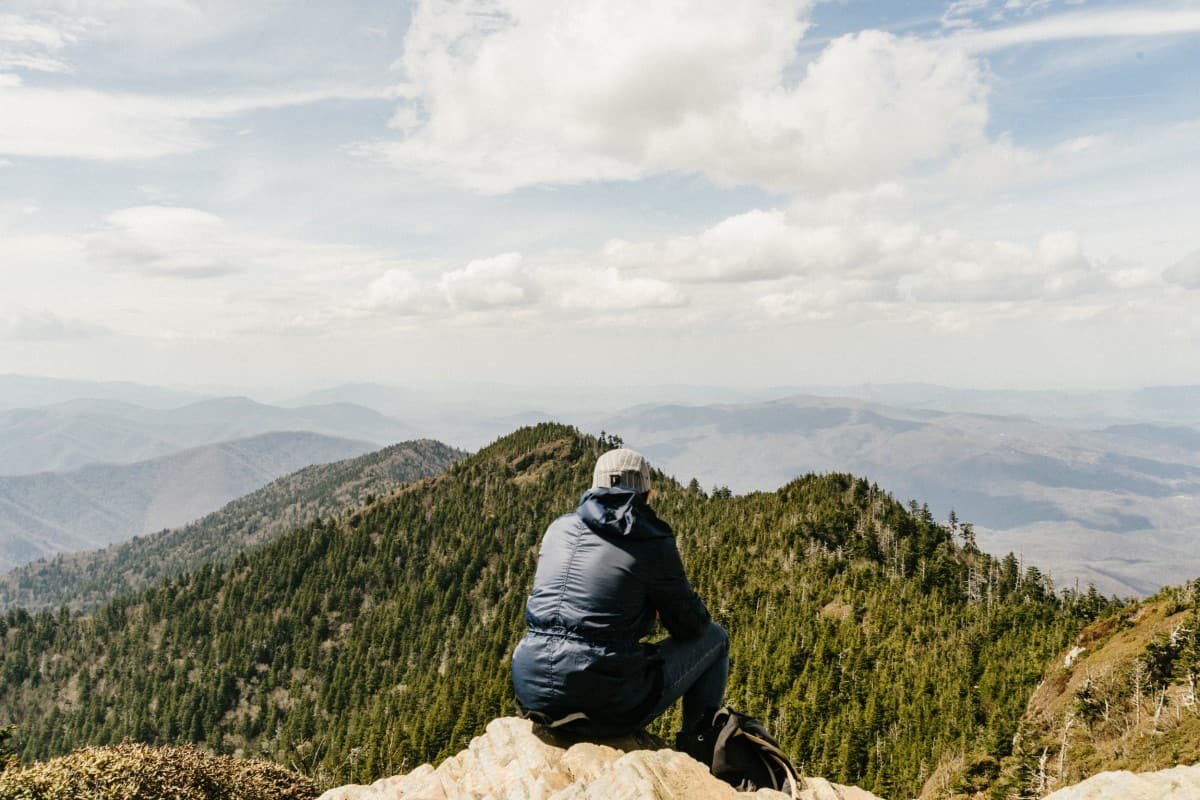Waterproofing your tent can take some time and a few critical supplies, but is an important task that should be completed before venturing out into the wilderness. Well-made tents come straight from the factory with a variety of waterproofing measures designed to be reliable for years and through harsh weather conditions, but you may still need to do some work of your own to effectively waterproof your portable abode. Here are a few methods I’ve picked up on how to repair and prevent leaks in your tent.
Ways to Waterproofing Your Tent
Patching
After enough use, any tent will require some patching to repair holes and tears in the canvas exterior. Through sun, heat, time, and repeated stretching, even the most expensive materials start to rip and tear in some places. Many tents come with a few patches and perhaps even the adhesive material required to conduct seamless repairs. The entire process should be relatively easy and take only a few minutes of direct effort, but it is important to allow the patch at least one full day to settle before heading out into the woods.
Before applying the patch, make sure to clean off the outside of the tent around the cut or hole. Then, if you have a dedicated repair patch, gently but firmly press the adhesive side down on the exterior of the tent with at least one inch between all edges and the extent of the tears. To be extra sure that the patch stays on, I recommend placing a heavy box or another flat-bottomed object over the spot as you allow it to set for 24 hours.
Even the smallest tears in your tent should be patched thoroughly. Ignoring them or implementing stopgap measures will only lead to the tear widening and potentially becoming too big to patch effectively. Always repair leaks as soon as possible after identifying them in your tent.
Sealant Products
Some commercially-available sealant products can be remarkably effective at waterproofing a tent in the long term. Ideally, the sealant you use should be odorless, flexible, and resistant to both hot and cold temperatures. I find these products to be especially useful when leaks pop up in and around the seams of the tent since they can be applied to tiny areas while staying effective.
Different sealants have different methods of application, but in general, you just need to apply a thick smearing of the material over the leak for it to dry up and seal against the water. Just like with the patch, I recommend creating at least a one-inch margin between the edges of the sealant and the edges of the hole or tear.
One problem with using these products, however, is that they can add bulk to your tent if used too much. A tent coated with rubber sealant products will be substantially more cumbersome than a brand-new one of the same model and may take up extra space in your pack. While liquid sealants may be very strong solutions to minor leaks, be careful about relying on them as a first-line defense.
Waterproofing the Tent Floor
The floor of your tent is likely to be the strongest point in the entire assembly, but that doesn’t mean that it can’t form tears. Sharp rocks and branches could open up your tent and let in water from below if you aren’t careful. I generally wouldn’t recommend patching up the floor of your tent since the tougher material may not adhere as easily or hold for as long as a patch on the canvas walls. Instead, you should look to other options like sealant products to repair these leaks.
If the tent floor ever develops a more massive hole, this may be one of the times that you should probably replace your tent rather than attempting to repair it. Whereas a large tear in a canvas or mesh wall can be replaced with a larger patch or some sewing, the tough floor material is almost foundational for your shelter. I wouldn’t camp out in a tent with a compromised floor, so I won’t recommend that you do it, either.
Repairing the Rain Fly
Holes in your tent rain fly should be taken care of just the same as tears in your tent’s canvas walls. Without a strong and leak-free barrier against the elements, your tent could quickly become a bathtub if a storm sweeps in overnight. Most rain flies can be repaired with relative ease, but you may need to bring out stronger adhesive materials since they are more directly exposed to strong winds and rains.
Sometimes, extreme damage to your rainfly may be impractical to repair. In these cases, you should be able to order a replacement from the manufacturer. As a relatively simple component of your tent, the rain fly is more easily lost, damaged, and replaced than any other part. Try only to order rain flies designed for your specific tent, though, as third-party manufacturers may not be able to match the dimensions of your frame exactly and may provide an incomplete seal against the weather effects outside.
Tarping
Waterproof tarps can be excellent compromises between having a rain fly on and keeping your tent exposed to the elements. While less complete in their ability to protect you from driving rain, a well-made tarp can keep your sleeping area unaffected by relatively mild rainfall without preventing ventilation as most rain flies do.
If you choose to set up a tarp, make sure you bring one that is specifically dedicated to outdoor weather protection. Some tarps may also be made from lightweight materials designed for backpacking. Set it up no more than one foot above the highest point of your tent, and center it on your sleeping area. If you expect rain and wind to come from one direction more than others, you may want to lower one side or corner of the tent to enhance your protection. Tarps can be repaired through patching and sealant products much the same as your tent can.
Conclusion
None of these waterproofing measures can make up for a poorly-made tent. Some manufacturers are just unable to provide industry-standard waterproofing to their products, and while you might save a few bucks by ordering these tents, you’ll probably regret your decision the first time a downpour hits. Get a nice tent and take care of it well to provide the ultimate waterproofing for your next excursion.








Leave a Comment